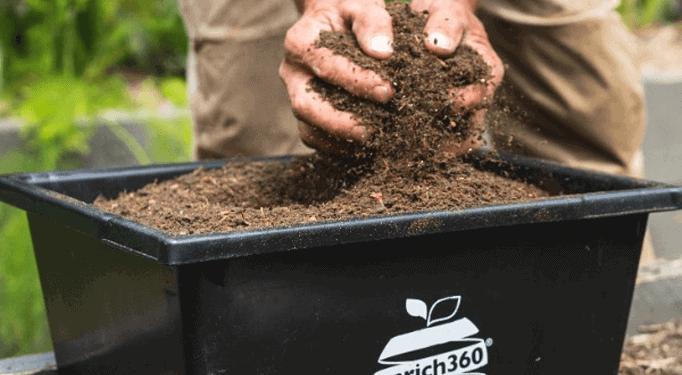When it comes to internal SEO for your website, there are a lot of factors you need to take into consideration. Of course, you want your business to rank well in relevant searches, but if your site structure isn’t set up appropriately, you are not setting your business up for success. With only 17% of businesses investing in SEO, it’s likely site structure isn’t a top priority. However, site structure and internal linking play a major role in how your business ranks online.
At Higher Ranking, we know that internal SEO can be confusing, which is why we’re here to help! In this blog, we’ll be discussing everything you need to know about internal linking structures as well as how to create an internal linking strategy. First, let’s break down what each of these terms means before diving into the specifics.
What Is Site Structure?
To sum it up, site structure is how a website is organised. As a business, you want a website that can be easily navigated by users. However, your site also needs to be crawlable (searchable) by search engines. Your site structure should appease both users and search engines for the best results. Many times, business owners only consider how users interact with their site. In turn, this is why some websites struggle to appear in online searches.
When a search engine visits a web page, they look at the organisation for relevance to a search. To organise your pages, you want to make use of heading tags (H1, H2, H3, etc.) throughout the page to improve internal SEO. This organisation tactic allows search engines to easily understand the content on your page instead of sifting through all the information.
This same organisation structure needs to be practised across all pages. Think of your site structure as a web. Each strand on the web leads to another strand. If a strand is missing, you can’t access that part of the web. The same goes for your site. Your pages need to connect to each other with a logical map and structure to improve internal SEO. You don’t want to have pages on your website that users can’t access. Not only is this information not accessible, but search engines can’t crawl and rank these pages either.
With your site structure, you also need to consider grouping your pages by topic and not by keyword. Search engines have come a long way since they began analysing content. Grouping by topic vs. keyword allows you to create natural sections on your site which can help users and search engines find the info they need. Keep in mind that keyword research is still an important part of your content strategy. To learn more, check out our blog What You Should Know About Keyword Research.
Breaking Down Internal Linking
Now that you understand some best practices for site structure, let’s talk about what you can do to improve your website’s on-page SEO. Internal linking is the act of linking one website page to another that’s from your own website. In the previous paragraph, we linked to one of our blogs; this is an internal link. On the other hand, external linking is using a link on your site that points to an outside source. The link in the very first paragraph of this blog is an example of an external link. While both are important, we won’t go into too much detail on external linking in this blog.
With internal linking, there are two types of linking you can do: navigational and contextual. Navigational links simply help users see a cluster of topics and click on ones they are interested in. Most times, you’ll see navigational links at the top or on the side of web pages. Contextual links are links within the content. Any links used in this blog content are examples of contextual links.
Internal linking can be extremely critical in improving your website’s internal SEO. To break it down, internal links have three benefits:
1. Internal Links Help With Site Structure
When used correctly, internal links help direct search engines and users to new pages on your website. Connecting pages together through internal SEO allows you to show the relevance of content to search engines to improve the credibility of your site.
2. Internal Links Help With Authority
An internal SEO linking strategy allows you to become an authoritative source on the internet and improve search rankings. Search engines rank pages on a variety of factors, including internal linking. The more authority (importance) your pages have, the better they will rank.
3. Internal Links Help Users Find Relevant Content
Have you ever visited a site that wasn’t relevant to your interests? You most likely navigated away from the page. With internal linking, you can add links to your content that allow users to find content relevant to their interests and needs. Ultimately, this also helps create a better user experience on your site.
Steps for Building an Internal Linking Strategy
Whether you already have an established website or you’re starting from scratch, you need to consider your site structure and internal linking strategy from the beginning. If you’ve never implemented an internal SEO linking strategy, here are the basic steps you need to follow.
1. Understand and Create Your Site Structure
First things first, you need to decide how you want your site to be set up. You need to create main pages (known as topic clusters). For your main pages, you want to use topics and titles that have high search volumes that are also relevant to your business/products. Leave the long-tail keywords for smaller subpages or within your content. Remember, think of your site structure as a web.
If you’re having trouble identifying your main pages or even narrowing down your page options, think of what brings the most value to your business. If you have four main services, those will be your main pages.
2. Build Out Subpages
After you’ve determined your main pages, all other topics will be subpages. If you have a subpage, but you aren’t sure what main page it’s relevant to, consider how you would use internal SEO linking to lead back to that main page.
It’s important to note that you have the ability to create many layers within your site structure. There are no specific rules to how many layers you can have for your pages. Of course, you don’t want it to be too confusing to readers and search engines. Just make sure your site’s architecture makes sense and is organized.
Let’s look at the Higher Ranking website, for example. One of our main pages is called Services. Underneath that main page, we list all of our service options. Within those subpages, we link to relevant content. This is just one method of building subpages and maintaining internal linking.
3. Choosing Anchor Text
We’ve talked about site structure and types of internal SEO links, but you’re probably wondering about what text you should be using to link back to other pages. This is known as anchor text. While there are some methods that work better than others, you can use a variety of tactics for the best results.
- Relevance — You want to look for natural options when linking text in your content. Never force a link that doesn’t belong in that content. It won’t make sense to your readers or search engines.
- Variety — Ideally, you want to optimize your content for specific keywords. However, you don’t want to use the same anchor text when linking throughout the content. While you won’t be punished by search engines for using the same anchor text, it won’t sound natural to your readers.
- Length — In your content, consider using long-tail keywords to help with your linking strategy. This isn’t always possible, but keep it in mind as an option for your anchor text. Google Search Console is a great tool to help you find long-tail keywords that can lead you toward improving the performance of your page.
4. Identify Site Authority & Increase Ranking of Pages
There’s no doubt about it — some of your site’s pages will be more authoritative. You can use this to your advantage and pass this authority to other pages. There are many free tools across the web that you can use to determine what pages of your website have higher authority. After you’ve determined your highest authority pages, then you can use these pages to improve the ranking of your subpages.
As for a strategy, the best option is to look at your pages with the highest authority and determine where you could internally link within these pages. These internal SEO links need to have valuable and relevant information. In other words, do not link to another page if it doesn’t make sense.
If the pages that have the highest authority don’t have relevant content, this will allow you to expand on your content strategy. Work on creating new content, so you can appropriately link to internal sources rather than linking something that isn’t relevant. As a reader, you wouldn’t want to be reading through a page and come across links that don’t make sense, right?
5. Optimise New Content
After you’ve taken the time to expand your content strategy and create new information for your site, make sure you’re optimising your new content! Whether it’s a blog or a services page, go through and link to internal sources where they make sense. At a minimum, be sure to link to two to three internal sources, including a main topic page to maintain internal SEO within your website.
While optimising new content is essential, you also need to go back and check on existing content. Even evergreen content needs a refresh every now and then. Go through and update any outdated links or information that may have changed since this initial publish. Keeping your content fresh is a great way to improve your internal SEO and on-page SEO efforts as well.
Final Thoughts
We know that was a lot of information given to you about internal linking. Although it seems like a simple process, there are many steps that business owners miss when it comes to internal SEO linking. After you’ve learned about the importance of internal linking and the impact it can have on your online presence, it’s vital that you take a step back and analyse your website as a whole.
As a business owner, you need to ask yourself if your site structure is easy to follow and if your internal SEO linking structure makes sense. If you answer no to either of those questions, then it’s time for you to make necessary adjustments to your website. Remember, an internal linking strategy can truly help you improve your ranking in search results.
SEO is a major part of any digital marketing strategy, and we know it can be a time-consuming task for business owners. If you are struggling to keep up with your internal SEO linking efforts, our team at Higher Ranking is standing by ready to help. Visit our website to learn all about the services we can offer your business. If you’re ready to improve your website ranking, contact us today to start working with our team of experts.










